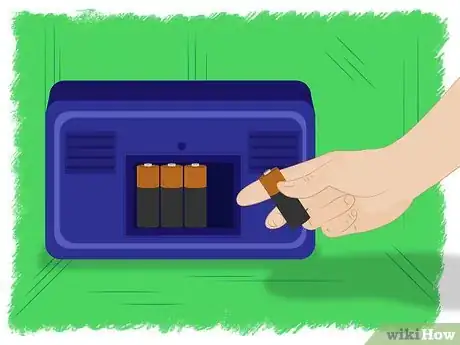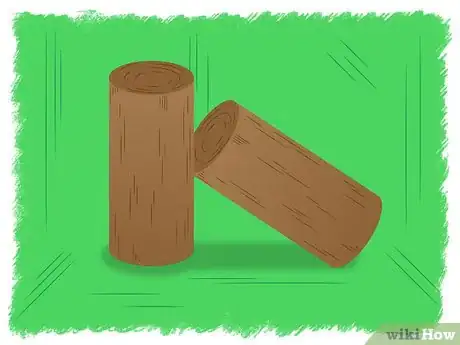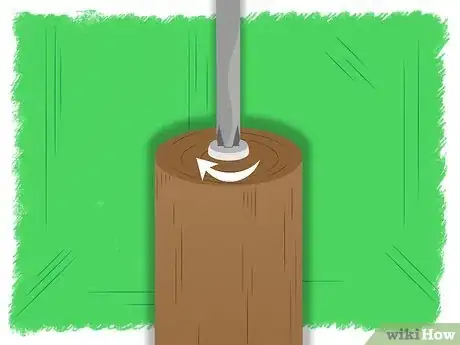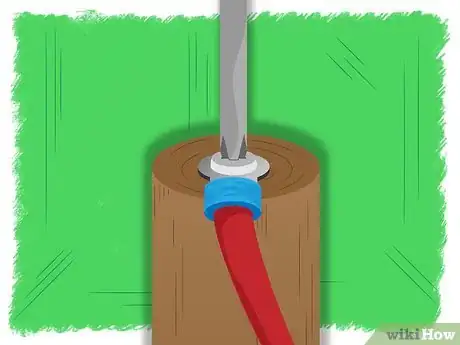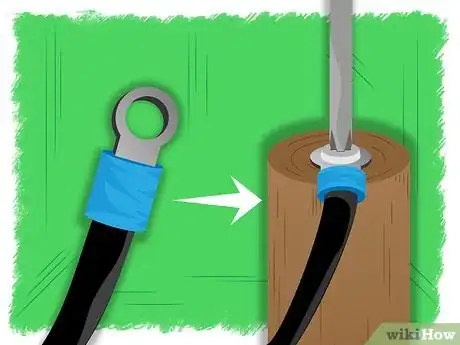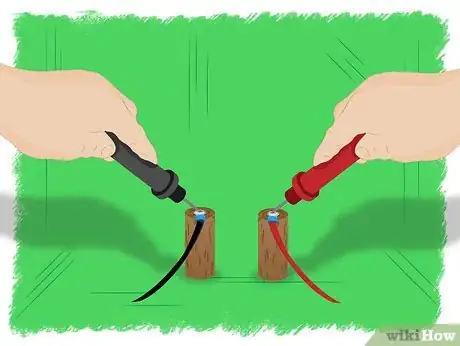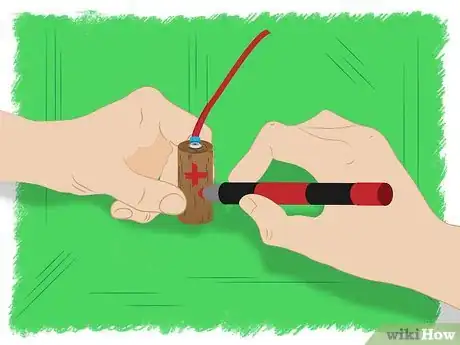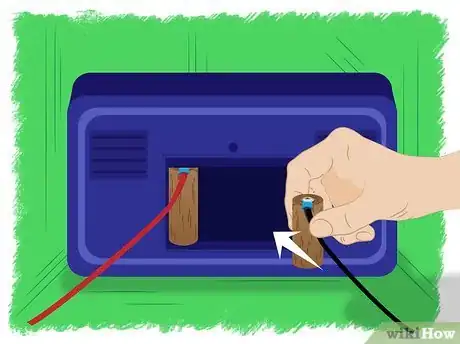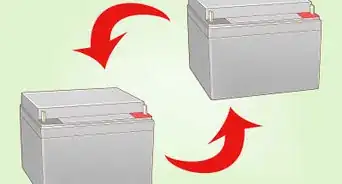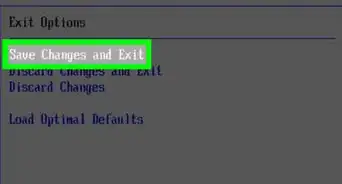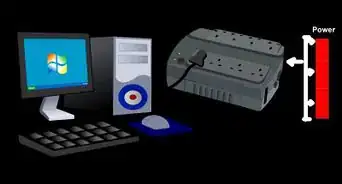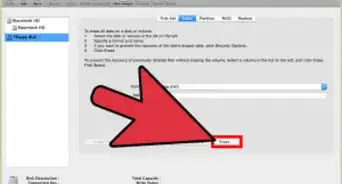wikiHow is a “wiki,” similar to Wikipedia, which means that many of our articles are co-written by multiple authors. To create this article, 12 people, some anonymous, worked to edit and improve it over time.
This article has been viewed 221,855 times.
Learn more...
You've got dozens of battery-powered devices around, some used so often that you need to recharge the battery constantly; and some used so rarely that by the time you use them next the cells will have corroded and ruined the thing. Wouldn't it be nice if you could run everything from two or three power supplies, without having to worry about all the mismatching DC connectors, and without danger of frying something because you plugged it into the wrong AC Adapter?
Steps
-
1Turn the device off, and remove the battery cells. Recharge or properly dispose of them.
-
2Cut wood dowels into the right size for the battery you're replacing. 1/2" diameter dowel rod will work for AA cells, and 1.25" dowel for D cells. Cut the dowels to about the length of the cell not counting the protruding (+) tip; that will be provided using a screw. You only need two pieces of dowel, whether you're replacing 2, 4, or 8 cells.Advertisement
-
3Drill a pilot hole into the center of one end, smaller than the screw you'll be using.
-
4Screw a small wood screw, preferably with a head that most resembles the positive tip of the cell, into the hole you just drilled. Don't tighten it yet.
-
5Strip the wire from the positive (+) end of your power supply, and loop it around the screw. For a better connection, use a crimp terminal instead.
-
6Tighten the screw onto the wire or terminal.
-
7Repeat the steps for the negative (-) terminal.
-
8Double-check your polarity with a meter if you have one.
-
9Mark the dowels with red and/or "+" for positive and black and/or "-" for negative, to avoid dangerous and costly mix-ups!
-
10Insert the dowels into the device, with correct polarity (see Tips), and turn it on.
Community Q&A
-
QuestionIs it good for the phone to be charging while someone plays with it?
 CyanCodingCommunity AnswerCharging your phone while using it does not have any negative effects on the phone/battery. The only difference between using it and not is that you will experience a slower charge while using it.
CyanCodingCommunity AnswerCharging your phone while using it does not have any negative effects on the phone/battery. The only difference between using it and not is that you will experience a slower charge while using it. -
Question"Strip the wire from the positive (+) end of your power supply"- but where has that wire come from?
 Community AnswerIt comes from the AC adapter. The AC Adapter has two wires, one positive and one negative.
Community AnswerIt comes from the AC adapter. The AC Adapter has two wires, one positive and one negative.
Warnings
- Make sure you use the correct voltage power supply for the battery you're eliminating. Assuming series circuits, two cells is 2.4 to 3 volts DC, 4 cells is 4.8 to 6 VDC, and 8 cells is 9.6 to 12 VDC.⧼thumbs_response⧽
- The AC adapter (sometimes called a "wall wart") for this project must provide a DC output. A wall wart that provides an AC output is not suitable and if used, may damage the device. An AC input rating that matches the household power is required.⧼thumbs_response⧽
- If after connecting the finished product and the device appears to work for just a moment before shutting off, it may be because the Amp rating of the adapter is too low. Ideally, match the adapter to the DC amp requirements of the device (if provided on a label of the device). In the image above, the current rating is (12, 1 A) and means that there is 12 A available for the 12 V output and 1 A available for the 5 V output. Most AC adapters however, have a single AC voltage and amperage input value (or range of voltages like the one above 100 V - 127 V) and a single AC or DC voltage and current output value. Connecting an adapter with a current rating equal to or greater than the device requires will allow the device to operate properly.⧼thumbs_response⧽
- Don't try this with anything you can't afford to lose. Mistakes can happen, and even fire or explosion can result in the worst cases.⧼thumbs_response⧽
- Sometimes, the device or adapter rating may be in watts. Watts can easily be converted to amperes by applying Joule's Law when the voltage is known. This law states DC Watts = DC volts x DC amperes. The adapter above shows 12 V x 12 A = 144 watts, but there is also 5 V x 1 A = 5 watts. 144 watts + 5 watts = 149 watts total. If the device connected is rated at 100 watts at 12wattsVDC, this adapter should perform perfectly, and have 44 watts at 12 V and 5 watts at 5 V in reserve.⧼thumbs_response⧽
- Audio and video devices will often suffer from distortion or noise in picture and / or sound if the voltage rating of the adapter is more or less than expected or if the amp rating is "close" but still lower than expected. Turning volume or brightness down can reduce the amount of noise and distortion if the amp rating isn't too much lower than needed.⧼thumbs_response⧽
- Some measurement devices take the voltage drop with discharge of the batteries into account. These devices may simply switch off since constant DC electricity is supplied for long time. Most of the times these devices can be revived by briefly using batteries and again switching to the constant DC supply of the eliminator.⧼thumbs_response⧽
Things You'll Need
- Various lengths and diameters of dowel rod
- Pieces of wire, 18 gauge or larger (the lower-numbered gauge, the larger the wire)
- Power supplies: solar panels, car batteries, old wall warts, etc.
- Some small wood screws
- Wire stripping/crimp tool (optional)
- Crimp connectors (optional)
References
- This research was made possible, in part, by a land grant from the City of the Sun Foundation, though the specifics of the research were not coordinated nor endorsed by COSF.
